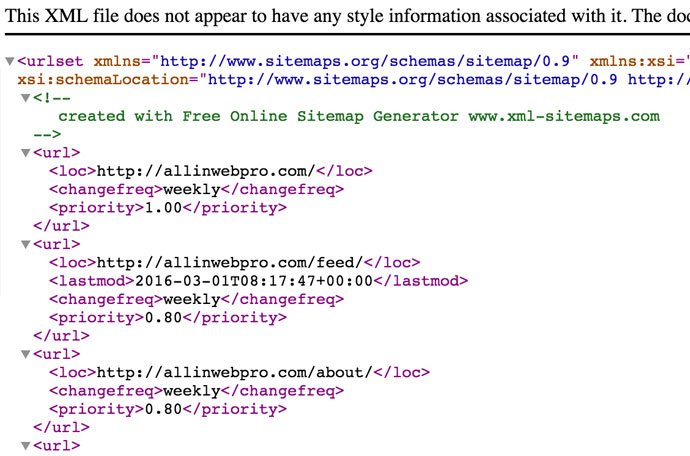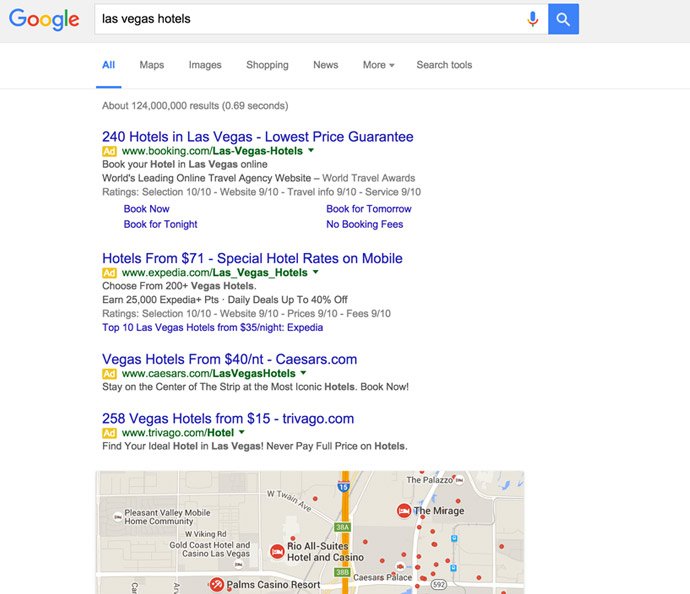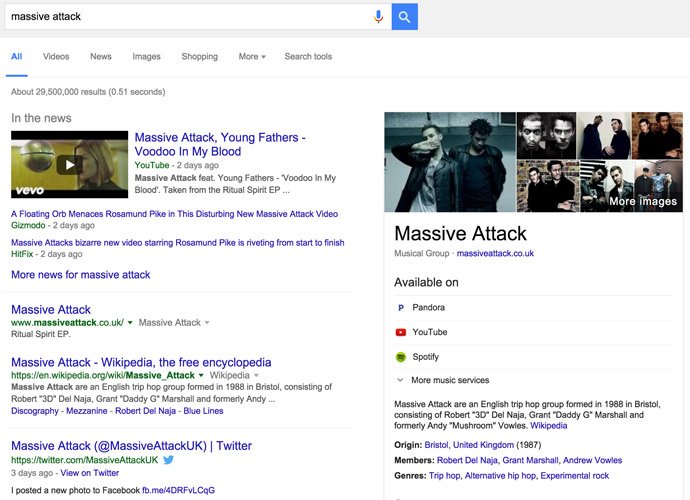Marketing
Can SEO Help Authors Promote Books Online?
Is SEO A Reliable Online Promotion Strategy for Books?
Search Engine Optimization (SEO) is a technical science, not guess-work or smoke and mirrors. Whether you are an author who wants to promote your book online, or a business owner just looking to capture more leads, SEO is a critically important marketing tool you need to be aware of and understand that might be easier than you think to take advantage of. It's true that SEO is big mystery to many people, and it's also possible to waste a lot of money on the service with a bad strategy or unprofessional provider. But SEO is an extremely critical aspect of marketing today and when done right can be a reliable foundation for every long-term marketing and promotion strategy. If you know the search terms that are being searched most often for the product or website you want to promote, such as a self-published book, and you focus energy on adding valuable information on your website for those keywords, then you may be able to gain a steady stream of new visitors to your website from those specific keyword phrase searches.
The Best DIY SEO Strategy for Authors & Writers
Aside from hiring a trusted and skilled SEO marketing agency which is always my first recommendation, I believe the next best SEO strategy is to build an on-going content creation strategy that is not just manageable but also focused and measurable. To begin, think of what kind of content you're able to create easily by yourself that is both high-quality and high-volume. Next develop a marketing strategy that incorporates your well focused & targeted SEO keyword phrases to promote that content on your website, your social media channels, and any third party websites you can utilize.
Promote Your Keyword Focused Website Content on Social Media
This strategy should emphasize promoting and distributing the valuable free content that you publish yourself on a regular basis to as wide an audience as possible. You can do this using blog posts on your website, facebook posts, twitter, Instagram, or videos you create and publish on YouTube, or Vimeo. To improve your website's ranking try to host the content directly on your website and then share the link in your social media channels & groups to promote it and build links back to that content on your website. Focusing on 1 or 2 social media platforms that specifically match the type of content you create will help keep your content & delivery focused and yield the greatest value. With social media it's better to use 1 or 2 platforms very well than to do alright at many.
SEO in a Nutshell, Link-Building & Content Creation
Optimizing keywords & meta-tags on your website is the first and best step you can take towards making your website appear in searches for specific relevant keywords. But keep in mind, the on-going bulk of the work after your existing website pages are optimized, is creating new content on your website to expand the number of pages on your site coupled with link-building strategies (creating links back to your website) on as many respected third-party websites on the internet as possible. That's SEO in a nutshell, building links that point to your website and adding & sharing valuable content on your website that is optimized for your keywords. The goal is to create signals on your website and across the internet that show Google and other search engines that your webpage on your website is THE BEST WEBPAGE on the internet for that specific keyword phrase search.
Black-Hat Link-building for SEO
One way to build links from third-party sites is to manually go add them yourself, some SEOs create their own networks of hundreds of micro-websites as forums, info sites, blogs, etc, and then slowly over time build them with content from their customers, others do it with browser 'bot' automation programs. Although, I don't recommend either of these strategies because they are unnatural, and don't typically occur organically. Some of these strategies and others that are questionable are often called Black-Hat SEO and can be penalized by Search Engines like Google.
White-Hat Link-building for SEO
Another way to build links is to create really interesting content and disseminate it in the form of press releases, social media posts, or articles on other websites. This content should be genuinely interesting and valuable to readers. If content about your product or brand are posted on news & industry websites then you're doing both promotion of your brand, building relationships, and link building happens naturally. These are just a few of the techniques that are safe to use because they are very normal and natural activity online, and are called White-Hat SEO.
Why Authors Are Great for SEO
All of these activities require work, but because the most important work in SEO is content creation, if you're an author you're well positioned to create a lot of very valuable SEO content. I tell everyone writing is the hardest part of SEO, so if you write well and often you're perfectly suited to generate a high-volume of regular content for your website's blog, social media, or third party websites that link back to your own site. Although I highly recommend hiring a professional SEO company or consultant to help you identify which keywords are best to target, how to maximize your social media value and make it efficient, optimize your website's meta tags, and show you how to include keywords appropriately in your blog posts and content. If you don't have that much money to invest in SEO, the good new is you can do the content creation and PR link building yourself with a little training and guidance. If you don't have time to do it yourself then you've got to find the right kind of content creator who can create content in the channel that's best suited for your brand and products.
Let Influencers Promote For You
In the book publishing industry, as well as many other industries, often the best way to sell a book or product is to identify the celebrities and key influencers who would really love your book or product. These are people who have a large following on social media already, people with tens of thousands or hundreds of thousands of followers. If you can get one or two of these influencers to talk about your product, you will suddenly be marketed to thousands of new people for free.
Beyond SEO, Utilize Existing Distribution Channels
Another route is to simply access the large distribution channels out there that already exist. For instance, how do you get your book or product on the "featured new & best sellers" shelves in brick & mortar stores as well as online retail stores? How do you get established groups or associations of people to add your book to their "staff pick" lists? If you can find out this may be the easiest way to get seen and heard. I for one have never ordered a book I'd never heard of by accidentally stumbling across it online. I find books by looking at "what other customers bought" lists, staff picks at bookstores, recommendations from friends on social media, and hearing the book is on a popular book club list such as Timothy Ferris' book club, or Oprah's book club. This could be the best and most effective kind of PR for book-selling. Try going to the networks that millions of readers are already using and simply ask to be included or send free copies to the leaders of those groups or to popular influential bloggers who already have a massive following, so they can simply add you to their lists!
SEO is only part of Marketing
I always recommend doing SEO, but isn't there a better way to promote a book than building up SEO value from scratch? How many people really look for and find books on search engines vs inside Amazon, Good Reads, other book websites? You might not want to put all of your marketing energy into SEO, but regularly writing content on your website and promoting links to that content on social media is something you should be doing regardless, and it just so happens to be a core part of a successful SEO strategy.
Ask Your Friends How They Find New Books
Start asking everyone you know in each conversation you have with them the next time you talk, and ask them where they discover new cool books to read, how do they search when looking for good books or recommendations on what to read next. They might say I search online, but WHERE do they search online, in Amazon or by asking their friends on facebook?
What Keywords Are Other Authors Using?
For keywords, ask yourself what authors have surely spent money on marketing & SEO, have high quality websites, and are internet savvy. Next go to their websites, and placing your mouse cursor on their website on Mac "CNTRL+click" or on PC "right-click" and you should get an option to "View Page Source". Then use "CTRL+F" on PC or "command+F" on Mac and search for "meta". Look for text that says "meta description", "
Exact Keyword Phrase Matching Helps
Some websites show up simply because they've been around a long time, or just happen to exactly match the keyword search phrase with their domain name or blog post title. If you're writing a book about 'How to promote books online', and do a search for "SEO for self-publishing books", you'll likely find many websites that appear simply because their keywords in your search match their domain name exactly, or because they are just a very old website.
Build Your List of Keywords
Before you do more research, you should also do a brain dump of all the keywords you think match what your book is about. If your book is about 'How to Promote a Book online' you might also want to do Google searches for "SEO for authors", "How to market self-published books", etc, and then look for all the bloggers' websites who show up there. I recommend starting to build a spreadsheet list of websites that are already ranking well in the kinds of searches you expect your customers to use. Google Sheets is a great place to build your list in a spreadsheet; use website name, domain name, author name, keyword you searched, and position it ranked 1-10 as your columns; then add each website as each new row.
Ask Bloggers to Write About Your Book
If you have a list of bloggers who are writing about the topic of your book, then email your info to 10 new bloggers a day just by doing basic relevant Google Searches and adding them to a list, there's a good chance some of them will mention your book and link to your website before or after reading your book.
Don't Forget E-Books And Audiobooks
I also personally use Audible a lot these days to read most of my books. This is another good marketplace that shouldn't be overlooked when thinking about distribution platforms that might be interested in carrying your book too. Many authors offer their books as a downloadable e-book, there are several different popular formats and having your book available in each might be a great way to sell it as a download on your website. You could also create an audio version of your book. These newer formats are also most accessible online so you may find additional promotion and distribution opportunities if you explore these networks and the communities that talk about them.
5 Benefits of Social Media Marketing
While most companies are accepting that social media marketing is a great way to stay in touch with the thoughts and feelings of their customers, many still don’t exactly understand why it works. Gathering a following on social media is now a powerful key factor in having your company’s voice heard, but that is just the tip of the iceberg. The goal of social media marketing isn’t just about getting more likes on facebook, followers or retweets on twitter but it's also about good marketing practices that benefit businesses in major ways to create online sales and achieve the same impact of traditional advertising. Below we've listed 5 major benefits to social media marketing.
1. Brand Awareness:
Social media is one of the best ways to introduce people to a new brand or product. It can also help reintroduce an existing brand to a new audience as well as strengthen your relationship with your current costumers. Utilizing social media, which over two thirds of the United States’ population uses, is one of the easiest, most cost-effective ways to get your company’s name into people’s mind which can then lead to traffic to your website or place of business, which is the ultimate goal of many social media marketing strategies.
2. Brand Legitimacy:
In the same way employers run background checks for new hires, consumers also a do a bit of research to verify if a company does exist and has quality services or products. Now-a-days it’s easier than ever for anyone to create a website for just about anything, a product, an event, an idea, or anything you can imagine. Smart consumers want to make sure that the place they plan to interact with is who or what they say they are. Social media marketing suggests that new customers may be driven away if a business’ social media accounts appear to be inactive because they assume that the company may no longer be in business. Social Media marketing can benefit your brand legitimacy by showing that you are a company that keeps up to date in your industry and that you know what is going on in your industry.
3. Increase Sales:
Once you've established yourself as a legitimate brand, this audience that you have built creates trust between your business and potential consumers. This connection can generate sales by allowing them easy access to your new and existing products with a simple post. One of the best parts of social media marketing is the ability to create content tailored specifically to your audience. Engaged followers on social media can help you gain more exposure by liking or sharing your posts which could be indirectly advertising your product or services to their network of friends and followers. This can help increase your sales through direct website conversions or through spreading awareness of promotions that you run as special offers to social media followers. Most social media platforms now have designed special tools for businesses to help promote themselves through various ad placement integrations that do not interrupt the users' experience on that specific social network. These non-disruptive ads, such as in-stream facebook ads, are very important as followers who are bombarded with online ads may be put off by the company running them and may result in a negative reaction towards the brand. In the end it is possible to lose trust you worked so hard to earn if you practice social media marketing in ways that users don't appreciate.
4. Improved Customer Service:
Social media is all about connections; connecting people with people who have similar interests or experiences. So it makes sense that companies are now using social media to connect with their consumers. This can allow your business to benefit from direct customer feedback or from past clients with the ability to immediately respond to any requests made, thereby improving the customer service experience.
5. Content Distribution:
Social media plays an integral part in any marketing strategy as it becomes one of the main sources of content distribution. In the past, the challenge was the need to ensure that your content reached your customers in the shortest time possible. With social media there are so many tools at your disposal to get real-time news about your company (or industry) in the hands of your customers with ease. A simple click is all it takes to get your brand's new products or services shared with hundreds of thousands of people.
**BONUS FACT** Social Media also includes Yelp and Google+, so make sure to update your company's information and images on networks like those too.
Take a moment to address your company’s social media marketing. What are the strengths in your social media strategy and where can improvements be made? If you need assistance creating or optimizing your social media profiles to nurture customer relationships, then All in Web Pro is here to help.
7 Questions to Ask Yourself Before Building a Website
Want to build a new website?
Exciting right!? Whether you're planning to hire a web designer or interested in starting a do-it-yourself (DIY) website project, having a smart approach and knowing where to start can save you time and money. We want to help you with this important and exciting process, and have written a few important things to keep in mind to help make your first steps easy and stress-free. Many people can get overwhelmed by the many different options, new terms, and sometimes complicated features they hear about when speaking with web designers. But if you ask yourself a few simple questions you can easily prepare yourself with a strong foundation of the right information to help make your next steps and discussions with any web designers much more productive and efficient.
In this post we've created a list of helpful questions to ask yourself that will help tremendously if you take a little time to answer them before contacting web designers about creating a new website or even if you want to build it yourself:
1. How will your company benefit from a new website or redesign?
- Do you want to increase revenue and online sales?
- Do you want to bring more traffic to your site?
- Do you want to integrate any new features into your website?
- Do you just want your website to be modern and mobile-friendly?
2. Who are your primary audience and target visitors?
- Do you have a younger or older audience?
- Will most of your visitors already know your brand when they arrive, or visit after only seeing an advertisement without knowing much about your brand?
- Are your visitors interested in learning something or taking a specific action?
- What action do you want first time visitors to take?
- What kinds of actions do you want returning visitors or existing customers to take?
- Do you prefer visitors to call you, book something, buy something, sign up for something, or just submit their email address?
3. What content do you need, and what content do you already have?
- How much information needs to be on your website?
- Do you know what pages you want to have, the names of the pages, and text they will contain?
- Do you have photos already, or do you mind using stock photos on your website?
- Do you have any graphical elements to add, and have they already been designed?
- Do you already have a logo designed?
- Do you need any custom graphics or icons to communicate your message?
4. Do you have your domain, hosting, or company email already?
- Have you thought of or purchased a domain for your website yet?
- Have you decided what hosting company to go with and what type of hosting you'll need?
- Do you have a company email setup with your domain name in it?
5. Have you researched what your competition is doing?
- What kind of website are they using?
- How does their content compare to what you want on your site?
- What 'calls to action' (CTA) do they use?
- What products or services do they emphasize most?
- What is the structure and sitemap of their website?
- What special features or functionality does their website use?
6. How will you market your website & drive visitors to it?
- Will you continually update your content to provide new valuable content for visitors?
- Will you use social media activity and networks to drive people to your site?
- Will you use online, print, radio, or TV advertising to drive traffic?
- Do you want to pay for Search Engine Optimization (SEO) to rank well in Google?
- Do you need traffic right away or are you happy to have traffic grow slowly as you add more content to your website or social media streams?
7. How Do You Measure Success and Optimize For It?
- Are you considering site traffic monitoring systems?
- Do you want to track ROI for conversions per advertisement?
- Will you try to track total sales, or be able to identify sales from different channels?
- Will you use outside sales and marketing subcontractors, or your own in-house team?
For measuring advertising performance and optimizing to improve it, you may want to consider strategies such as A/B testing, SEO, Content Generation, Ad Conversion Tracking, asking leads how they heard about you, using and comparing multiple channels to drive traffic from social media and online content distribution networks, in addition to traditional print, radio, & TV placement.
Don't be afraid to ask for help.
Be sure to keep these tips in mind when you're considering building your next website. You will be much more prepared if you take a few minutes to consider each question, learn what the terms mean if any are new to you, and don't be afraid to ask more questions. If you have get stuck on any of these questions, or feel want to have someone double check your answers, feel free to reach out to a professional at anytime!
All in Web Pro is here to help when you need us. Feel free to leave a comment below, or give us a call at our Las Vegas office at 702.331.0650!
Las Vegas Graphic Design Services
All in Web Pro is a leading Las Vegas graphic design company. Our talented designers are ready to work on any graphics you need, whether it is logo design, stationery, website, book cover, packaging, t-shirt design, app design, brochures, or any other graphic work that you can think of for print or web. If you need it, we’ll create it! We'll work together to get your product or online service designed better and faster than you thought possible. You will receive high quality designs and work directly with our designers to bring your vision for your design ideas to life.
If you’re a new business, you need to create a unique “look” for your brand to ensure you stand out from the crowd. It’s very common for business owners to be unsure how to do this or where to do it. All in Web Pro will create a memorable, unified look between all your business’ marketing materials including your business logo, website design, business cards, letterhead, envelopes, flyers, marketing materials, and anything else you might need.
Even though All in Web Pro specializes in creating graphics for the web, we love designing graphics of all types, including print graphics, and would love the opportunity to help create your company’s brand. As professional designers with years of experience in graphic design, web design and more, we know the importance of quality better than other Las Vegas graphic design firms. Contact us today and our hands-on design team will work closely with you to deliver a product that will exceed your expectations.
Web Design for Boosting Sales & Conversions
Balance Aesthetics with Conversion
If you sell products online or use your website to refer customers to your business, it’s important that your website does a good job of converting visitors into sales or leads. When designing a new website or updating an old one, it’s quite common to focus on aesthetics. However, this could be disastrous for the business goals you want to accomplish with your website if you don't ensure that you're website is designed to achieve the goal you created it for in the first place. It’s best to try to find a balance between your website's goals and aesthetics together and come up with a “design that sells”, or in other words, converts traffic into the sales or actions you want your visitors to take.
Every Web Design Element Counts
When designing a new website, it’s important to understand that the design of your website not only represents who you are as a company but is also a major influence on the amount of sales or leads generated via the website. And these days, websites have become the first major means of communication between you and your potential customers making it very important to have good website design. However, web design is not just the visual design that we see, but it’s the entire structure, architecture, user interface, graphics, user flow, and website layout. By properly utilizing these as well as color, contrast, images, and typefaces it’s possible to boost your website’s conversion rates with a coordinated focus that envisions how all these elements work together to drive your target conversion.
Focus Your Web Visitors' Attention
Depending on which strategies and creative techniques are used while designing a given website, higher or lower conversion rates can be achieved. Once visitors know that your website has something your visitors are interested in, the visual design of your website can draw them in and can help focus their attention on what matters and move them to take your desired action or "conversion". Our team of web designers at All in Web Pro in Las Vegas understand that certain parts of your website are more important that others, such as forms, calls to action, value propositions etc, and that your website requires appropriate techniques to make those parts of your website get more attention than other less critical areas.
Simplification May Convert Best
One way to start boosting your website’s conversion rate that is being adopted more often by brands that have a single conversion goal, such as a single signup option is to create a simple and clutter-free design that doesn’t confuse visitors about which direction to go, or what to click on. Remove any unnecessary links, pointless information and extraneous images from your website to eliminate distractions as much as possible. Simple web layouts may work best for websites with that only have one single conversion goal. Also, check out your competitors’ websites to see what conversion tactics they may be utilizing, as sometimes the optimal conversion tactic for a specific audience or industry can be unintuitive and something discovered over a period of time through trial and error such as A/B testing.
Remove the Clutter & Extra Details
Try creating a simple and clutter-free design which doesn't make the user confused with too many options about which direction to go or where to click. Removing unnecessary links, information that doesn’t lead towards action and unsupportive images from your website can eliminate distractions and focus a visitor’s attention towards the action you want them to take. Although this is a simple design tip, the results you might achieve by following it while still adhering to good web design principles could give you a massive boost to the conversion rates of your website.
About All in Web Pro
All in Web Pro in Las Vegas provides custom web design and graphic design services. One of our specialties is creating conversion optimized web designs that will help you increase sales and refer more clients to your business.
Call us today to learn more about how we can help you achieve your online goals. 702-331-0650
How to Update your Sitemap.xml file for Google and Bing
Your Sitemap.xml file might not be up to date
Recently I've become inspired to create a multitude of new pages and blog posts for our All in Web Pro website to add a wealth of new content to our site to bring helpful information to our clients and site visitors, as well as to boost our ranking in Google searches. This week after publishing several new blog posts in a row I wanted to double check our sitemap.xml file to make sure Google & Bing had the most up to date list of all of our old and new webpages.
We'd been using a WordPress plugin called "Google XML Sitemaps" which had worked for us in the past and is designed to automatically update the sitemap.xml file anytime a page or post is created or updated on your WordPress website. This is important because you want all of your new webpages to be announced to search engines as soon as they're live on your website. And although search engines automatically rescan your website to look for new content and pages, submitting it to them directly can speed up the process and help those pages get indexed and seen by search engine users faster.
So after checking our sitemap.xml file that the Google XML Sitemaps plugin was generating, I noticed the blog posts I'd submitted a week earlier weren't appearing. I'm going to update our WordPress core and activate the plugin to see if it will start working again. But in the meantime I needed a way to update our sitemap quickly and manually to make sure it's appearing correctly with all of our links. Which is where the following short tutorial on how to update your sitemap.xml file begins.
What is a sitemap.xml file?
A sitemap.xml file that sits on your website's hosting server which tells search engines all of the pages on your website that exist, what priority you rank the pages in, when they were last updated, and how frequently you update them. This information helps Google & Bing know how often to rescan your website's pages for updates and which pages on your site are more important to show in search results. It's also a good way to announce the creation of new pages on your site to Google & Bing. The file is written in XML, which is similar but different from HTML, another type of "Markup Language, which is what the "ML" are abbreviations for. So it's important that your XML file is created correctly with no errors in the XML format.
Why is my sitemap.xml file so important?
If you want to have the best chance of showing up on the first page of a Google or Bing search when your potential customers or audience are doing relevant searches you need Google and Bing to know all of the pages on your website, which ones are the most important ones you want appearing, and also to include your most recently created content. If your sitemap is not up to date it will tell search engines that maybe your website isn't being updated and therefore might not have the most relevant and current information on it. Many other factors are taken into consideration, but when you know sitemaps have an impact on your search rankings and are an important part of SEO, why not be safe and make sure it's correct?!
5 Steps to Updating your sitemap.xml file
Here's a quick list of steps you can take to manually update your sitemap.xml file. Once finished you'll know it's live by simply go to your website homepage and add '/sitemap.xml' after '.com' or '.net'. (e.g. www.domain.com/sitemap.xml)
1. Generate your XML Sitemap file
There are several websites you can visit to generate a sitemap file for your website. I did a Google search for "sitemap generator" and found XML-Sitemap.com which worked well. Just enter your website URL and download the free files generated. The file we need is sitemap.xml.

2. Upload your sitemap.xml file to your website's root server
To get your sitemap.xml file onto your website's hosting server you'll need one of the following 2 things. A) The login & password to the hosting control panel for your website so you can utilize a file manager tool that your web hosts provides to upload the sitemap.xml file to your website's root (/) folder. B) You can download a free FTP (file transfer protocol) program to your computer, such as FileZilla, which will enable you to upload files directly to your website's hosting server. You'll still need to have an FTP user account created on your hosting account, which will have a username & password along with a hostname. For hostname you can usually just type your website domain name (e.g. allinwebpro.com), otherwise you can use the IP address of the web host server where your website's files are located, which your hosting company provides you.
3. Make sure sitemap.xml is in your server's root folder
The sitemap.xml file should be uploaded to the root folder of your website. This is usually the folder labeled '/', and is also usually the same folder where you'll find usually also see the 'index.php' and '.htaccess' files.

4. Verify your sitemap.xml file is live
Now go to your website and add the '/sitemap.xml' suffix to your website's domain name, like this: 'www.mydomain.com/sitemap.xml'. If the page you see looks something like this then it worked!
5. Submit your new sitemap to Google & Bing
Both Google and Bing have an advanced Webmaster Tools service where you can create an account and manage all of the different websites that you administrate. You'll need to verify that you control your website by following their verification instructions, which usually involves adding a snippet of code to the header or footer of your homepage. Once verified you can navigate to the 'sitemap' area of Webmaster Tools to submit or resubmit your sitemap.xml file. Both search engines have advanced tutorials and help information to help you complete this task, and both provide advanced reporting tools to let you know more about your website including any broken links, or how many pages are currently indexed vs what was submitted.
Other Options
Although this method works, it is a little time consuming and it would be much easier to simply upload a plugin to your WordPress dashboard that would automatically update your sitemap.xml file anytime changes were made to your site. I'm going to do some plugin tests and see if any are reliable and will update this blog post accordingly. But it's helpful to know how to manually create your own sitemap.xml file in the event that plugins become buggy or aren't picking up all of the links to your site, especially if you start using a subdomain which may be tricky for some automated plugins to read.
What Sitemap Tools Do You Use?
Please comment below if you found this sitemap.xml guide helpful, or if you have other websites, plugins, or tools that worked well for you.
About All in Web Pro
All in Web Pro is a Las Vegas Web & Graphic Design company that has been helping small and medium sized businesses unlock the power of the internet to accelerate their brands since 2010. If need help with your website or have want to know how to get more value out of your website, call our team today! 702-331-0650
Google Web Design Update: Removes Right Sidebar Ads
Without publishing an announcement Google has removed right sidebar ads from desktop browser search pages, now showing up to 4 paid ads at the top of searches before organic search results and up to 3 at the bottom of SERPs (search engine results pages). I'd like to think Google's update was inspired by the latest web design trends of 2016 which are shifting towards minimalism, simplicity, fewer simultaneous choices, and other feng-shui-like principles.
The change will significantly affect click-through rates and likely cost per click paid by advertisers for existing Google Adwords campaigns, especially for high traffic commercial keywords. The SEM Post reports that Adwords staff have confirmed that this change will be worldwide and permanent.

Previously high traffic searches would have 3 text ads at the top which will now change to 4 for highly commercial searches. The term 'commercial searches' will likely be any searches that yield high advertising revenue such as high CPC (Cost Per Click) and high volume search results with commercial intent.
Mobile search browsers won't see any changes for the time being and still display 3 text ads at the top of the page with up to 3 ads at the bottom of each search results page.
Google has been making lots of subtle changes to their search results page for a long time now, often performing many different experiments simultaneously across millions of users to optimize the experience of users based on changes in behavior patterns.
The removal of right sidebar ads, which are often ignored by savvy Google searchers, may be part of a longer-term strategy of Google attempting to make the right sidebar more useful and eventually more profitable through other forms of enhanced and more trustworthy content delivery. So just when you were about to sit back and enjoy the new whitespace of Google's new search page web design, you may need to start getting used seeing new more useful content there.
Examples of these shifts can be seen when searching for popular music groups which produce a wikipedia type fact chart where the right sidebar ads used to be. The change may also be partly associated with revenue models Google has calculated related to trends in revenue from ads in the sidebar compared to ads placed above organic content.
Either way, I'd like to say a big AMEN to whoever at Google had the smart idea to remove a little more clutter from our lives. They've done a great job of keeping their homepage clutter-free for so many year. Perhaps Google is now making this change in response to new trends in web design that are moving websites towards more simple, light-weight, and less cluttered designs for people searching for valuable information online.







